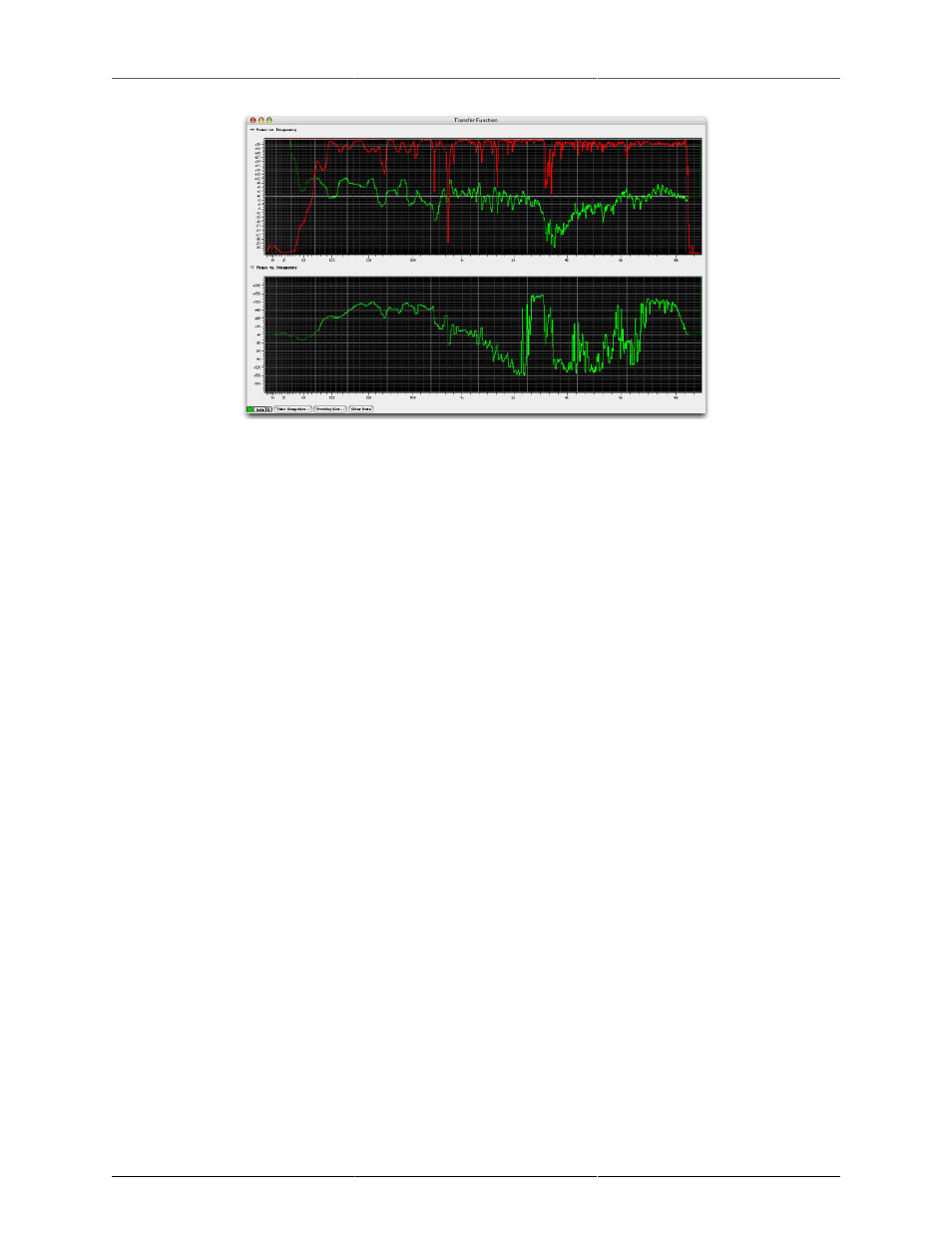Interpreting the data, Time-aligned transfer function – Metric Halo SpectraFoo User Manual
Page 67

The Transfer Function
67
Figure 4.22: Time-aligned transfer function
Notice that overall the coherence of the measurement has increased and that the phase no longer has the
“sawtooth” character. As explained earlier, the phase is not discontinuous at 2 kHz – it is just wrapping around
due to the cyclic nature of phase. The reason we cannot get the phase measurement to appear continuous
for this system is related to the fact that the system that we are measuring is not time aligned. When the
measurement of the low end is time-delay compensated, the high end is not and vice-versa.
Interpreting the Data
So now we have a measurement of the transfer function of the system. This leads us to a few natural questions:
1. What does the data mean?
2. How do we interpret the data?
3. How do we use the data?
The transfer function measurement system calculates three different functions from the source and response
signals. Each of these functions adds a piece of the puzzle and will be instrumental in interpreting and using
the transfer function data.
The first function is the power response of the SUT. This is the effective equalization that the SUT applies to
signals that run through it.
The second function is the phase response of the SUT. This is the phase shift/distortion applied to the signal
by the SUT.
The final function computed by the transfer function measurement system is the coherence. The coherence
is a measure of how much, on average, the response signal “lines up” with the source signal on a frequency
by frequency basis. This is one of the most important pieces of the puzzle because it allows us to evaluate
the quality and usefulness of the data. Coherence is a little hard to understand, so we’ll examine it in a little
more detail.
About Coherence
Imagine the source signal is a simple sine wave. The response signal will, in general, be another sine wave
with the same frequency but a different amplitude and phase. Mathematically: